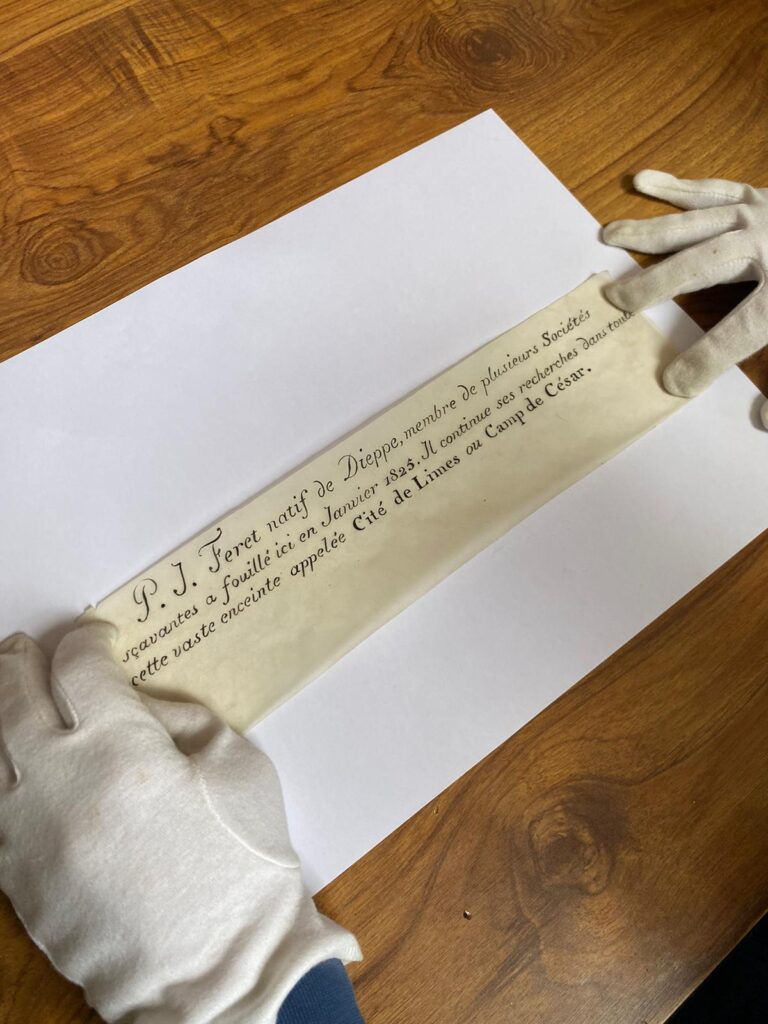In Dieppe, France, an exciting archaeological discovery was made by students excavating at a Gaulish village site, revealing a time capsule-like message in a bottle from the early 19th century. According to a BBC News report, this remarkable find was uncovered at the location of a 2,000-year-old fortified village, much of which has eroded over time due to its precarious location on a cliff. Municipal archaeologist Guillaume Blondel, who oversees the excavation, explained the context of the discovery and its historical significance.
The message was found inside a small glass vial typically used by women in the past to carry smelling salts around their necks. It had been carefully rolled up, tied with a string, and placed in this vial, which was then buried inside a pot at the site. Blondel compared the message to a time capsule, a rare but not unheard-of phenomenon in archaeology. He noted that this practice is more commonly seen in modern settings, where construction workers or carpenters might leave notes or mementos inside walls or foundations of buildings they create. However, such discoveries are unusual in the field of archaeology, especially at a site with such significant ancient and historical value.
The message itself provides an insight into 19th-century archaeological practices and the individuals involved in early excavations. It was written by P.J. Féret, a native of Dieppe, who was an active member of several intellectual societies at the time. Féret’s note was brief but informative, stating, “P.J Féret, a native of Dieppe, member of various intellectual societies, carried out excavations here in January 1825. He continues his investigations in this vast area known as the Cité de Limes or Caesar’s Camp.” The statement not only reflects Féret’s involvement in the excavation efforts of the early 19th century but also highlights the historical importance of the site, referred to as the Cité de Limes or Caesar’s Camp, a title likely referencing its association with Roman or Gaulish history.
Blondel emphasized how rare it is to find messages like this, especially at ancient sites where artifacts and remnants from earlier civilizations are typically the primary focus. In this case, the discovery offers a unique window into the minds and methods of early archaeologists, as well as their passion for uncovering the past. Féret’s work in 1825 was likely part of a broader movement in which intellectuals and historians sought to understand and preserve France’s ancient history, particularly after the Napoleonic Wars when there was a renewed interest in the country’s heritage.
The erosion of the cliffside location has meant that much of the original fortified village has been lost, but discoveries like this message in a bottle provide a unique and personal connection to the past. It not only documents the history of the site itself but also immortalizes the efforts of early researchers who worked to uncover its secrets nearly 200 years ago. This discovery serves as a reminder of the evolving nature of archaeology and the enduring curiosity of those who seek to understand the layers of history hidden beneath the earth.
No comments yet.







